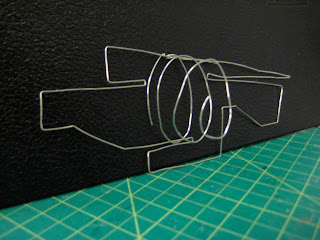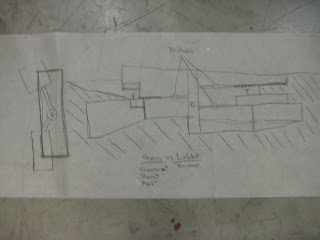As of now, my building looks like a giant 140' long and 30' tall wedge. As you walk in (at grade) you enter the lobby/gallery space. Directly below this space is concessions, restrooms, and tickets for the films. Across from this is the library, above which are offices and the conference room. Below the library is one of the smaller theaters. In this theater, movie-goers watch films on small screens attached to the head rest of the seat in front of them and use a pair of headphones (similar to an airplane). Below this is the other small theater, and across from that is the large theater. Both of these theaters are set up like a typical movie theater with stacked seating leading down to one big screen. Below these theaters is the archival space.
Section (Enter from the left)
Model with one side wall removed
Model
Model
Model
The crits discussed these points:
-the possibility of a walk through building and bringing public programing to the top
- maybe add a cafe as a stopping point on campus
-making the top lower or at less of an angle so it could almost be missed - or pushing
it down and making the entrance below grade - don't have a typical front door
-the concept of light and airy (on top) vs. dark and heavy (on bottom)
-plug vs. path (on the site) - have an attitude and why
-with the idea of weaving -> how does the building weave into the site/pedestrian path?
-possibility of making the building longer - how to slither across the site
So, more development for tomorrow.


































